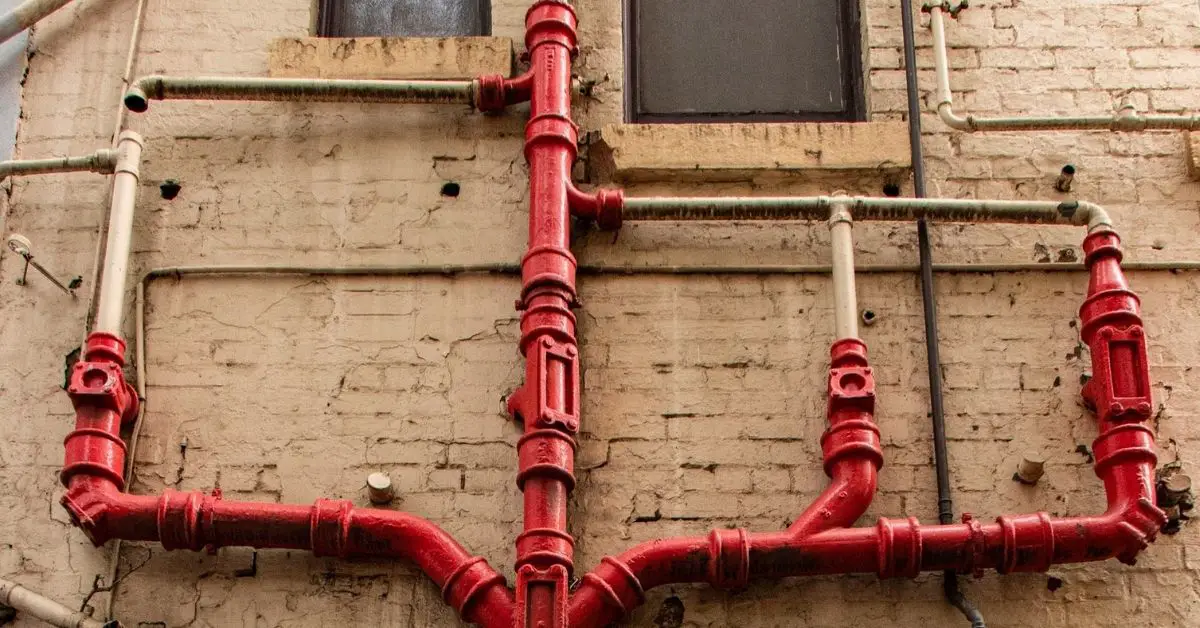Share

If you have a plumbing stoppage, it can be one of the most frustrating and stressful events that you will ever experience. In this blog post, we are going to discuss what causes plumbing stoppages and how you can prevent them from happening in the first place!
What is Plumbing Stoppage?
Plumbing stoppage is a problem where water cannot move through your pipes. It can be caused by many things, including:
- A build-up of sediments in the pipes. Sediment can include rust, calcium, or other impurities that create blockages over time.
- Fatty deposits on the inside of your drains and plumbing fixtures are caused by cooking oils and grease which solidify with cold water passages to form clogs.
- Hair, soap scum, or body fats become tangled around drain openings instead of moving down through your drainage system like they should do when you shower or bathe. These obstructions eventually form a complete blockage if not cleared out regularly.
- Due to frozen water lines, many people experience plumbing stoppages in their homes during the winter. This is usually because water that has been exposed to the colder temperatures must be allowed time to warm up before it can flow through your pipes again.
You may think it’s no big deal, but when this happens, it means there is little water flow from all faucets in your house! If left alone for too long, it can cause overflows that lead to water damage in your home.
How to stop a plumbing stoppage?
There are a few things you can do to prevent stoppages, which include:
Inspect your drains regularly
This means before or after showering for best results where clogs often occur the most! If you find any obstructions, get them cleared out immediately so they don’t become bigger problems later on.
Use a plunger or auger to clear out drain obstructions
If you find any clogs in your drains, use either of these tools (often found in standard plumbing tool kits) to clear them out.
Be sure never to try using chemicals like bleach since it can corrode the inside of your pipes and cause even more damage! Never pour cooking grease down the drain either as this will likely solidify once cold water passes through causing an obstruction in your pipes.
Check for leaks
If you have a leaking faucet in your home, it can be wasting up to 150 gallons of water every day! This is the main cause for many stoppages, so if your sink, toilet, or shower seems like it isn’t draining properly, this could be due to an internal leak.
If you do find any signs of leakage, get them fixed immediately as they are responsible for most plumbing problems when left unattended too long.
Use a plunger on the clog to clear it out
Sometimes using a plunger can be effective in dislodging a clog. You’ll need to cover the overflow drain hole with your thumb while plunging and make sure you get good suction on both sides of the plunger to create enough force for it to work correctly.
If this doesn’t remove the obstruction try using an auger or other tool instead since there might not have been much room for air when trying with just a plunger.
Use chemical drain cleaner
Using chemical drain cleaners can save you time and effort, but it isn’t the best choice for your plumbing. These products are very strong, so if they accidentally get into your skin or eyes, there will be no stopping!
They also corrode pipes over time, so professional plumbers don’t recommend using these chemicals to unclog drains unless all other options have been exhausted first.
Signs of a plumbing stoppage
There are several signs that you should take seriously as they can indicate a much bigger problem. These signs include:
- Slow draining sinks and toilets, which may become clogged with debris over time if left unattended to. This could lead to overflows that create water damage in your home or even flooding problems!
- Water discoloration from rust or other sediments found in the pipes of your home. This can be a sign of leaks or clogs that need to be fixed immediately since they are responsible for most plumbing problems when left alone too long.
- Noisy drains are often caused by water flowing through them at high speeds due to low pressure in the system. Sometimes this happens because there’s an obstruction somewhere along the line that’s causing the issue.
- Foul odors from the drains in your home are another sign of a potential stoppage or leak problem. This can lead to damage over time so if you notice these signs, get them fixed right away before they turn into bigger problems!
- Stagnant water is found when draining sinks, tubs, or showers. This is usually due to a clog blocking the flow of water and needs to be taken care of immediately if you want your drains to function properly.
- Sticky residue on fixtures in your bathroom or kitchen, especially near outlets used for plugging things into appliances or electronics. This is another sign of a clog that needs to be cleaned out immediately since it can lead to stoppages or leaks.
If you’ve noticed any signs like these, the best thing for you to do would be to contact your local plumber right away so they can assess what might be causing them and make sure all issues are resolved in one visit.
We hope this blog post has been helpful to you! You might also want to read our post on what you should consider when designing a plumbing system and how to add plumbing to the garage for your convenience.



0 Comments